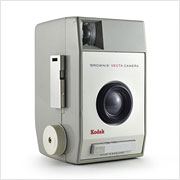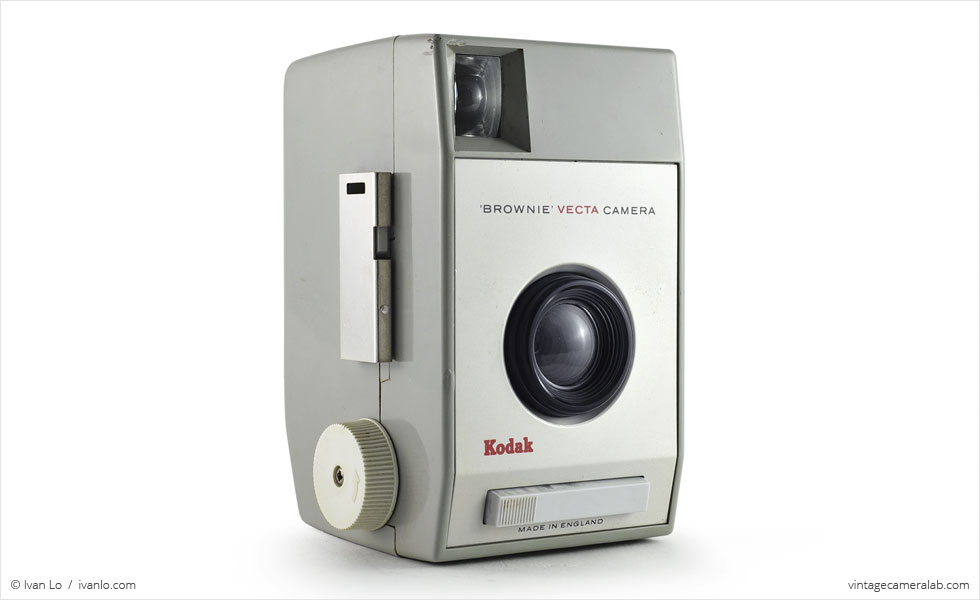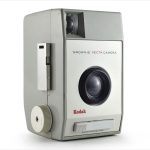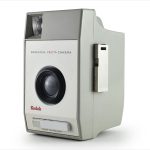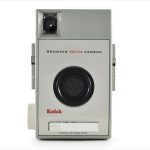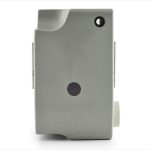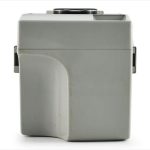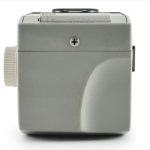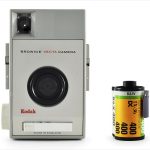Kodak Brownie Vecta Specifications
| Manufacturer: | Kodak Ltd., London |
| Origin: | USA |
| United Kingdom | |
| Made in: | London, United Kingdom |
| Introduced: | 1963 |
| Type: | Box, Viewfinder |
| Format: | 127 Film |
| Dimensions: | 7.3 x 11 x 7.1 cm |
Kodak Brownie Vecta Overview
The Kodak Brownie Vecta is a simple plastic box camera manufactured by Kodak Ltd., London—Kodak’s British division—in 1963 for the 127 film format. The camera’s stylish looks can be attributed to world-renowned industrial designer Sir Kenneth Grange who, in addition to a handful of Kodak cameras, is also responsible for the InterCity 125 High Speed Train as well as the modern London Black Cab).
Apart from its unusual design, the Brownie Vecta is quite basic. The single speed shutter’s long rectangular button can be found on the front plate below the simple lens with a fixed focus and aperture. To advance the film, a knob is located on the user’s right-hand side. Two sliding metal plates on either side of the camera serve as strap lugs as well as the latches that hold the front and rear halves of the camera together. The red window is on the back below the eyepiece for the simple optical viewfinder. The two curved indentations on the camera’s top and bottom are designed to reduce camera shake by offering a comfortable left-handed grip. Curiously, the Vecta has no tripod socket.
It’s likely that the only thing the Kodak Brownie Vecta has going for it is its dashing good looks but what a thing it is. The camera is absolutely beautiful and, in my humble opinion, is one of the best looking cameras Kodak ever made. In fact, I think that the only other box camera of this era which rivals its beauty is the Ansco Anscoflex and that’s because it was designed by Raymond Loewy, another famous industrial designer.
I spent many months waiting for the right Brownie Vecta to show up on eBay before taking a chance on this one. Being a European market camera, these things are not easy to find in the United States so I couldn’t afford to be impatient. Fortunately for me, this example is in perfect working order and very good cosmetic condition.
Find your very own Kodak Brownie Vecta on eBay.
McKeown, James M. and Joan C. McKeown’s Price Guide to Antique and Classic Cameras, 2001-2002. (Grantsburg, WI, USA: Centennial Photo Service, 2001), p 333.
“Kodak Brownie Vecta,” Camera Wiki, http://camerapedia.wikia.com/wiki/Kodak_Brownie_Vecta
